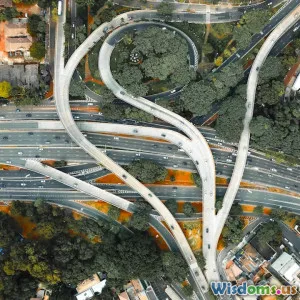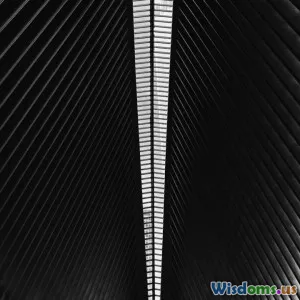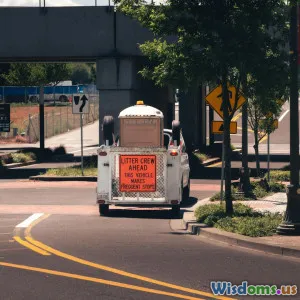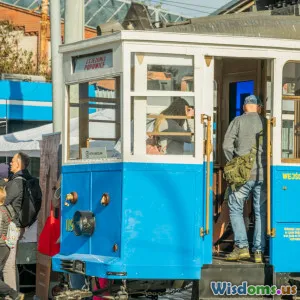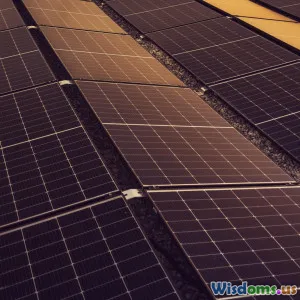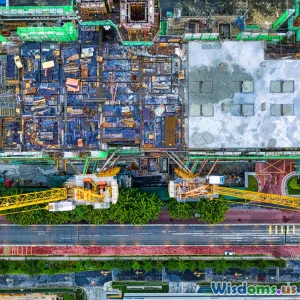
Design Strategies for Dynamic Urban Areas
7 min read Explore innovative design strategies that shape vibrant, adaptable urban areas for a sustainable and inclusive future. (0 Reviews)
Design Strategies for Dynamic Urban Areas
Urban areas are the vibrant hearts of modern civilization, constantly evolving under the pressures of population growth, technological advancements, and shifting socio-economic conditions. Designing dynamic urban environments presents a compelling challenge: how to create spaces that are not only functional and efficient but also adaptive, inclusive, and inspiring. This article unpacks forward-thinking design strategies that urban planners, architects, and policymakers are employing to breathe life into dynamic cities around the world.
Understanding Dynamic Urban Areas
Dynamic urban areas are characterized by their rapid development, diverse populations, and multifaceted land use. These cities experience continuous change, driven by economic flux, cultural shifts, and environmental challenges. Traditional static planning models often fail to keep pace, which calls for innovative approaches focused on flexibility, integration, and human-centered design.
According to the United Nations, by 2050, around 68% of the global population will reside in urban areas, underscoring the urgency of redefining urban design paradigms.
Key Design Strategies
1. Embracing Mixed-Use Development
One of the most effective strategies for dynamic urban areas is mixed-use development. By integrating residential, commercial, cultural, and recreational spaces within close proximity, cities can reduce dependency on cars, promote walkability, and enhance social interaction.
For example, the Pearl District in Portland, Oregon, transformed from an industrial area into a thriving mixed-use neighborhood featuring apartments, art galleries, and boutiques, all connected by pedestrian pathways and public transit.
The World Health Organization highlights that mixed-use communities contribute to better mental health by fostering social ties and reducing environmental stress.
2. Prioritizing Green Infrastructure and Sustainability
Green infrastructure — including parks, green roofs, urban forests, and permeable surfaces — improves air quality, moderates urban heat islands, and manages stormwater effectively. Sustainability frameworks like LEED and BREEAM have become instrumental in guiding urban design towards energy-efficient and resource-conscious principles.
Singapore’s Bishan-Ang Mo Kio Park exemplifies this approach. Its innovative river restoration project transformed a concrete canal into a vibrant, naturalized river corridor that increased biodiversity while providing flood relief and recreational spaces for its residents.
3. Designing for Flexibility and Adaptability
Dynamic urban areas must accommodate changing needs over time. Designing flexible spaces that can be repurposed or modified reduces demolition waste and promotes longevity.
The High Line in New York City is a compelling example. Once an abandoned elevated railway, it was repurposed into a public park that adjusts seasonally with varying installations and events, catering to diverse community needs.
Implementing modular building systems also allows swift changes—residences can be expanded, offices reconfigured, and public spaces adapted without extensive rebuilding.
4. Fostering Community Engagement and Inclusivity
Architecture and urban design should serve the diverse populations within cities. Encouraging community participation in the design process ensures spaces meet local needs and reflect cultural identities.
Participatory design led the revitalization of Medellín, Colombia. The introduction of cable cars and public libraries into underprivileged neighborhoods was driven by extensive community consultation, reducing inequality and sparking social cohesion.
5. Leveraging Technology and Smart City Innovations
Smart technologies, including IoT sensors, data analytics, and digital infrastructure, play crucial roles in managing urban complexity. These tools optimize traffic flows, energy consumption, and public safety, creating responsive environments.
Barcelona’s smart city project integrates sensor-driven lighting, waste management, and pedestrian safety systems, significantly improving quality of life while reducing operational costs.
Challenges and Considerations
Crafting design strategies for dynamic urban areas comes with challenges, such as balancing densification against green space, avoiding gentrification, and guaranteeing accessibility.
However, multidisciplinary collaboration among architects, urban planners, sociologists, and technologists can produce holistic solutions. Policymakers, too, have a vital role in adopting progressive zoning laws and funding inclusive projects.
Conclusion: Toward Resilient, Vibrant Cities
Dynamic urban areas demand design strategies that are as fluid and diverse as their populations. Embracing mixed-use development, sustainability, adaptability, community engagement, and smart technologies enables cities to evolve gracefully in the face of uncertainty and growth.
The future of urban living hinges on how well we can integrate these strategies to create spaces that are not just lived in but truly lived. By prioritizing human experience alongside environmental and technological considerations, architects and urban designers can craft cityscapes that inspire, nurture, and endure.
References:
- United Nations, World Urbanization Prospects 2022
- World Health Organization, Urban Green Space and Health Report
- Project for Public Spaces, "What Makes a Successful Place?"
- Singapore’s PUB Active, Beautiful, Clean Waters Program
- Smart Cities Week, Barcelona Case Studies
Explore these strategies further and envision how your city might transform into a dynamic space that balances innovation, ecology, and community.
Rate the Post
User Reviews
Popular Posts











